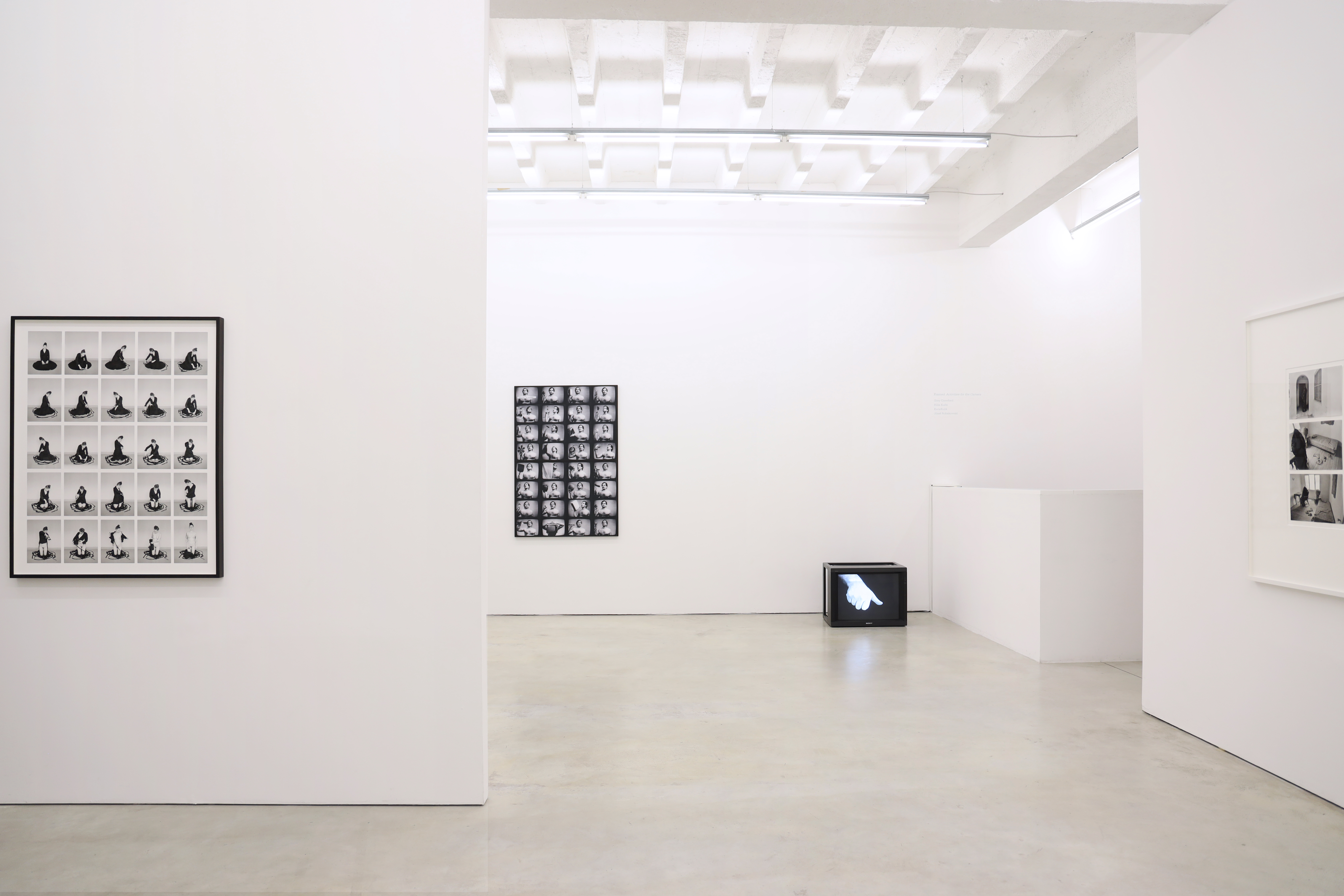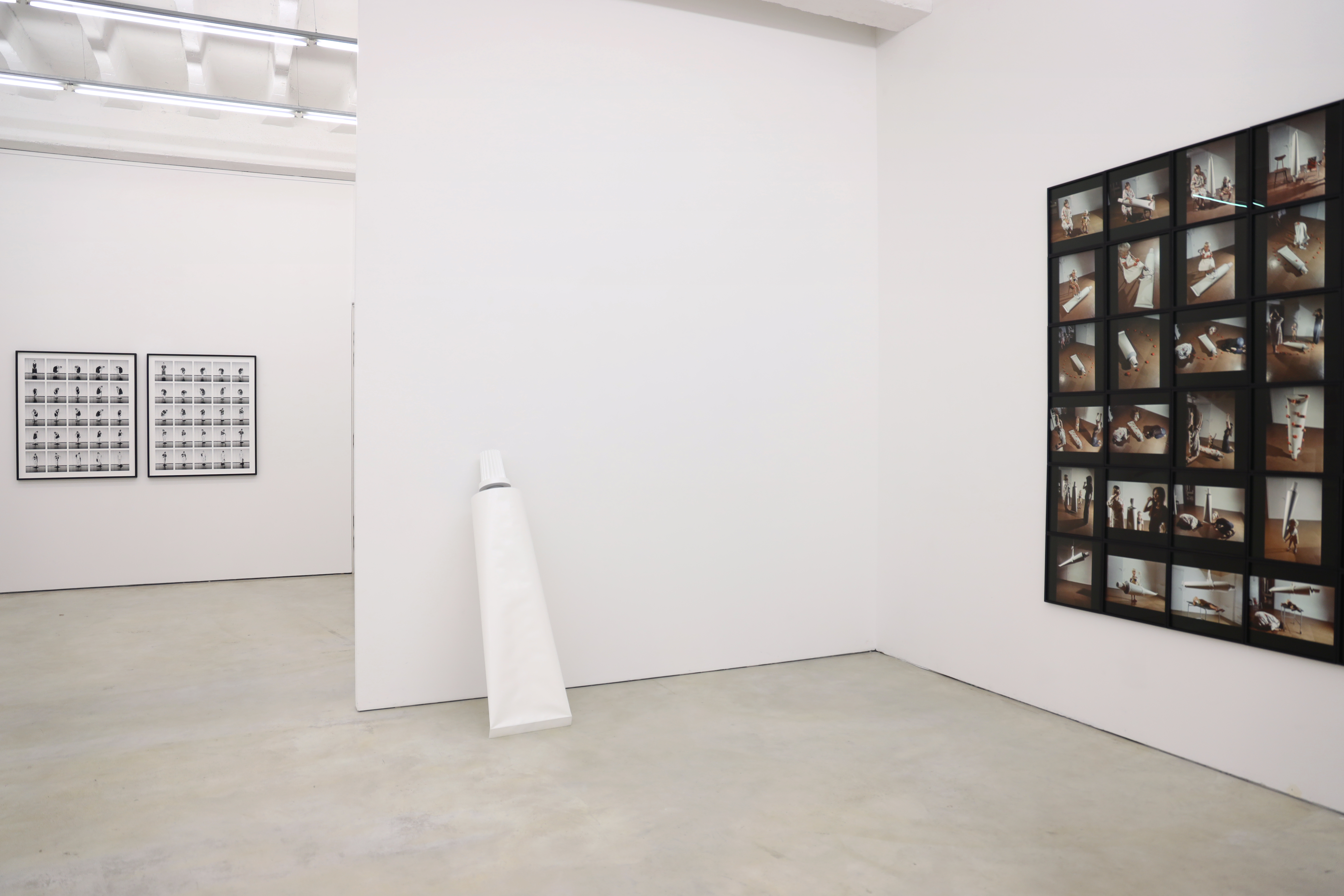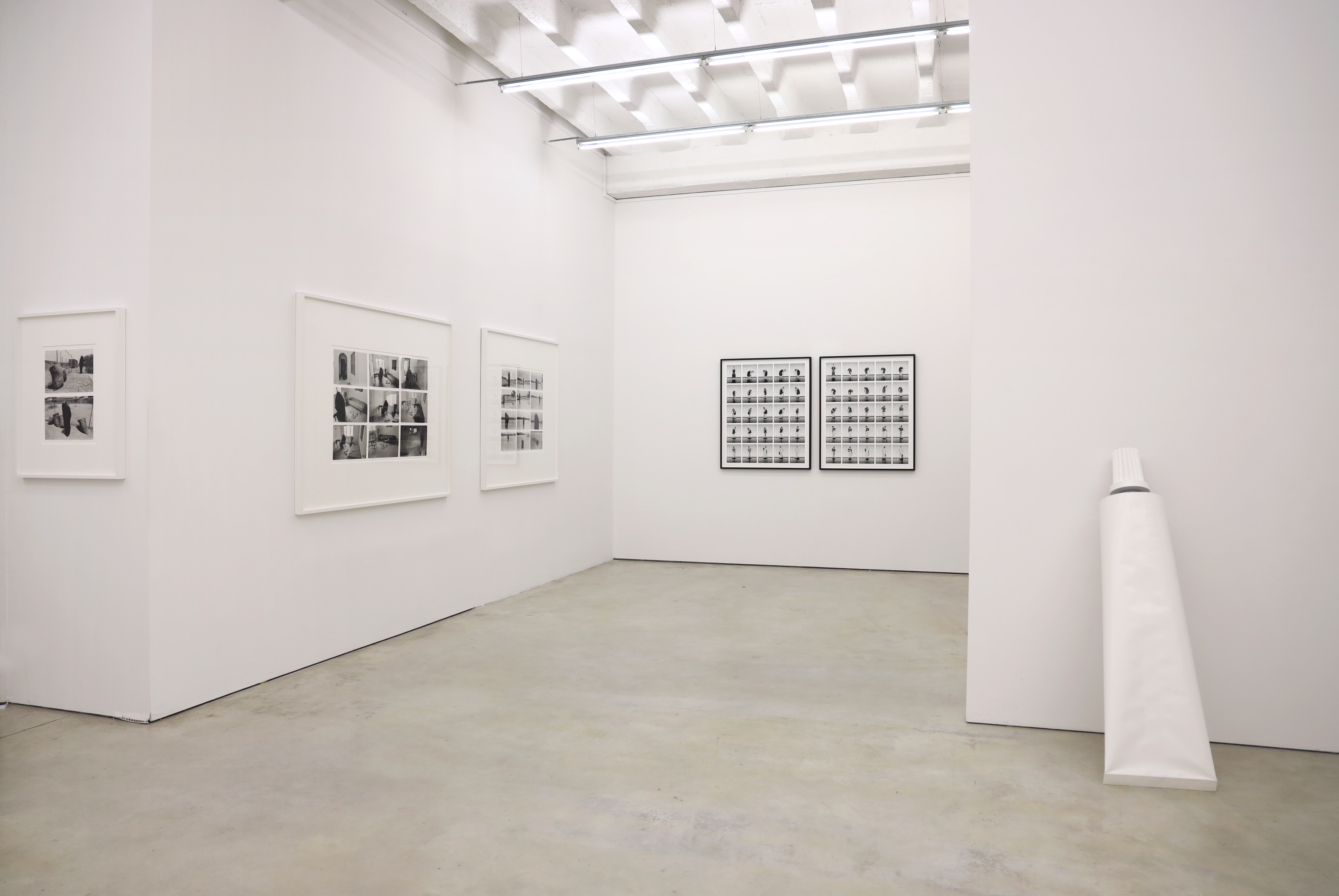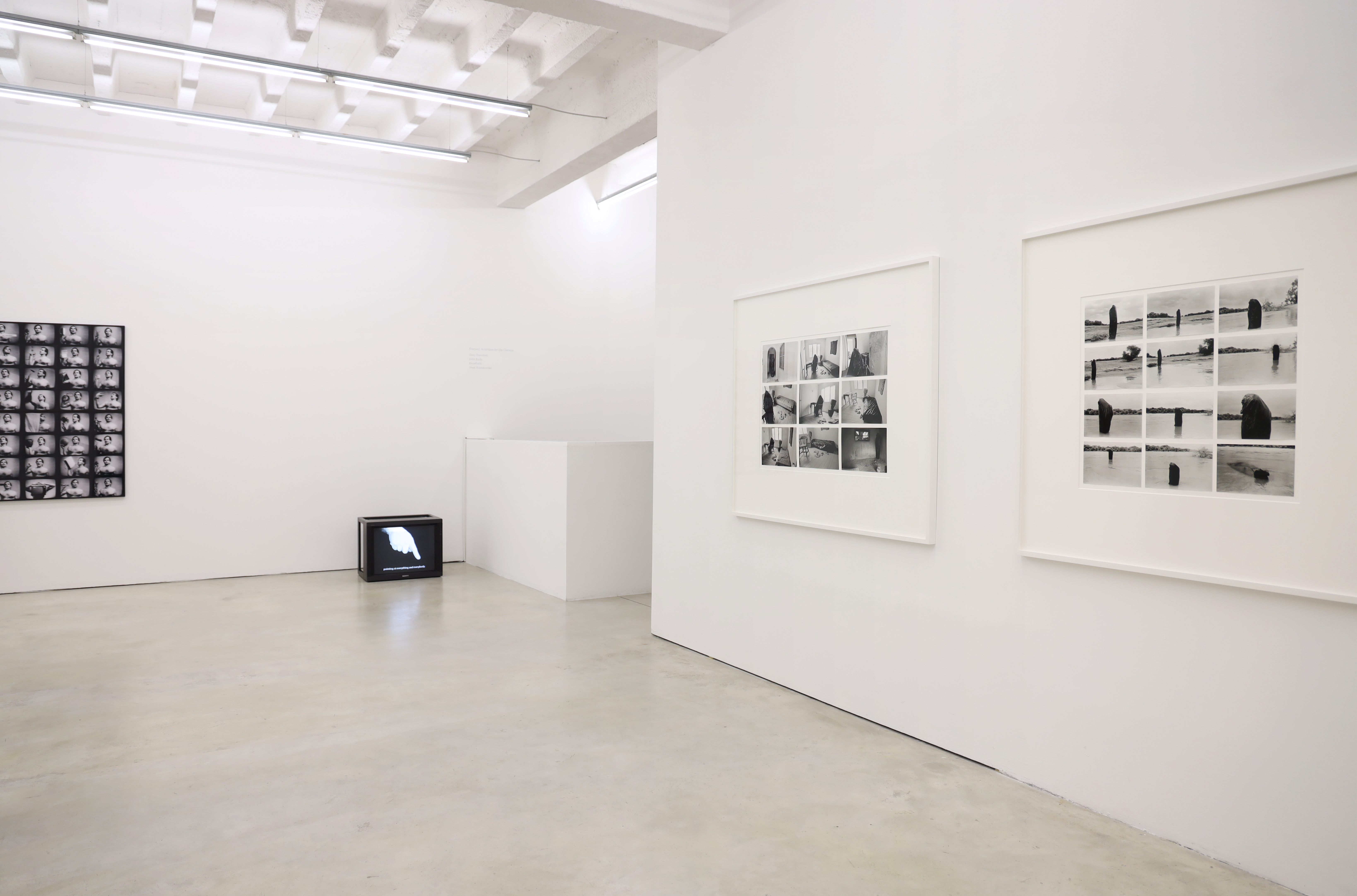Grey Crawford | Hilla Kurki | KwieKulik | Józef Robakowski
Opening: Friday, 29 October 2021, 5 – 8 pm
Exhibition: 29 October 2021 – 5 March 2022
Venue: Persons Projects, Lindenstr. 35, 10969 Berlin
Persons Projects proudly presents the group exhibition Framed. Activities for the Camera, focusing on the correlation between performance and photography.
Performance as an art form, beginning in the mid-20th century, has been used and developed by contemporary artists through their use of photography as their primary tool for recording their ideas and actions. Understandably, performance art needs photography to be able to last. Yet, photography plays an even more important role, not only as a means for the documentation but especially when the performance is staged solely for the camera. This exhibition presents a selection of artists who recorded their actions specifically for this reason.
Together, these selected works span more than 50 years and represent
several geopolitical regions. They range from Grey Crawford's early 70s
experiments in Southern California through the activities of the duo
KwieKulik and Józef Robakowski in communist Poland, to Finnish artist
Hilla Kurki's cut clothes photographs taken recently. All of these
pieces share a conceptual context in how they use repetition and
sequencing as their primary form for expression.
Each of these
artists experimented with the camera to test the physical and
psychological limits of their bodies. Their performances were staged and
carefully planned as photographs or videos without any other autonomous
events surrounding them. They are well aware of what Amelia Jones
describes in her article "'Presence' in absentia" (1997) as
performance's "dependence on documentation to attain symbolic status
within the realm of culture"¹.
Grey Crawford’s (born 1951)
early 1970s photographs Transfigurations (1973/74) encapsulating himself
in full-body black plastic bags were created to capture his
performance. It was a period especially in Southern California, where
performance moved away from the platform of an audience and into the
photographic framing of the moment. Crawford’s experimentations with
this type of format incorporated locations ranging from the Mojave
Desert to infamous ceramic slip installations of Douglas Humble in his
own home. These activities were intertwined with his other photographic
bodies of work yet with hindsight, open another chapter in the depth of
Grey Crawford’s artistic career.
Photography as a creative tool
found a receptive audience in Eastern Europe’s experimental art scene in
the 1970s. Conceptual Art from that time helped elevate photography
within the artistic community where sculpture and painting were held
with higher esteem.
Józef Robakowski (born 1939) is one of the
pioneering artists and experimental filmmakers associated with Poland's
neo-avant-garde movement in the 1960s and 70s. In his works, he analyzes
the language of the medium of photography and video and experiments
with recording technologies. His artistic approach draws from the
tradition of constructivism and Neo-Dadaism, recording the absurdity of
the former communist reality in Poland. Art is Power! (1985), a series
of multiplied nude portraits of the artist proudly displaying various
objects such as a chicken, a hammer, or toilet paper alludes ironically
to the representational portraits common in old masters, in which the
social rank of the portrayed is sanctioned by the attributes that
accompany them. The work depicts Robakowski as a vigorous
socialist-realist work leader full of masculine prowess. In this year,
Poland was politicly spiraling into a total collapse. This social
reality set the tone for a new beginning for both political and social
transformations. A continuation of this new manner of thinking is seen
in Robakowski's work Fetish, done in 1986-87. The objects used in this
piece also have a symbolic meaning for the artist and are part of his
activities related to the theme of the artist's position and
appropriation. This time, the objects are a collection of gifts mainly
by other artists in a token of sympathy for the Exchange Gallery, which
Robakowski had been running since 1978.
Most performing artists
in Poland in the 1970s didn’t concern themselves with preserving their
work. An extraordinary case contradicting that mentality was the duo
KwieKulik, consisting of Zofia Kulik (born 1947) and Przemysław Kwiek
(born 1945). They were especially aware of the documentation's role
played in their performances and artistic activities. The filming and
photographing of their activities helped establish this duo as one of
the most innovative artists of their generation active between
1971-1987. Throughout this time, they produced countless performances
captured on film and in photographs that were a political response to
the rejection of their ideas by the communist regime and the Polish
neo-avant-garde. Activities with a Tube (1975) belongs to a group of
works based on a strong connection between art and life, grouped under
the common title Making Money and Creating Art. The 42 photographs show a series of gestures directed toward a tube by KwieKulik’s family, such
as bowing, saluting, shooting, and brushing teeth. It is a commentary
characteristic of KwieKulik’s work, on social and political issues, as
well as on the position of the artist in communist Poland.
A
contemporary continuation of this 1970s performance-like tradition can
be found in the works of the Finnish artist Hilla Kurki (born 1985). In
her Phoenix series (2017) Kurki reflects upon the grief she embraces
after the premature death of her sister. She transforms her sister's
once borrowed black dresses into an emotional bridge to link us through
to her memories in the hope for self-recovery. By cutting, sewing, and
weaving, Kurki works through all her sister's collected garments to
reshape her personal story and create a new narrative. This activity
helps enable her to regain her authority in determining her own fate.
She began referencing her family's legacy of rug-making, the cutting of
clothes of the deceased to the weft. Both Ripples (2017) and the diptych
titled Theatre of Memories (2021) show a solitary performance, where
she cuts her sister's dress into a continuous thread while still wearing
it. Kurki's photographs have a familiar feel to Yoko Ono's early
cutting performances from the 1960s. They differ because there is no
audience in Kurki's performances other than the presence of the camera.
________________________________
¹ Jones, Amelia: "'Presence' in absentia. Experiencing Performance as
Documentation”, in: Art Journal, Vol. 56, Issue 4, p. 11-18, here p. 13,
1997.
Image: Hilla Kurki, Ripples, 2017, pigment print, 106 x 86,9 cm, courtesy: Persons Projects | Helsinki School
Supported by






